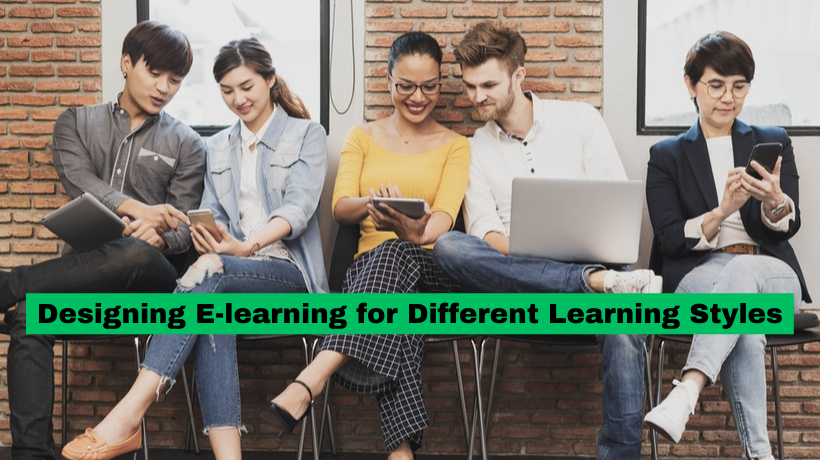Designing E-learning for Different Learning Styles
It is widely accepted there are four main learning styles that apply to adult learners. They are known as the VARK model and are visual, auditory, read-write, and kinaesthetic. How do you design e-learning courses that suit these different learning styles?
We’ll explore this question in this blog, but let’s first define what a learning style is before looking into each of them in more detail.
What Are Learning Styles?
Learning styles are methods, approaches, and instructional techniques that can deliver information to learners:
- Visual – learners that prefer a visual learning style respond best to visual content such as images, graphs, and diagrams.
- Read-write – learners that fall into the read-write learning style category like to read things like manuals and guides, and they often benefit from taking notes.
- Auditory – auditory learners learn by listening and speaking, so lectures, instructor-led sessions, and discussions help them learn.
- Kinaesthetic – kinaesthetic learners learn by doing, so they like to get hands-on with lots of practice.
Applying E-Learning Techniques to Suit Learning Styles
- Visual – include any type of image or visual representation, including videos and animation.
- Read-write – include a lot of text-based content.
- Auditory – videos and animations come under this heading, plus you can include other audio content. You can also use a blended approach to learning where elements of the course are completed via e-learning modules and other elements are in-person. This facilitates discussions which can be beneficial to people who have an auditory learning style.
- Kinaesthetic – including anything in the e-learning course that turns the learner into an active participant. Scenarios and quizzes are good examples.
Social vs Lone Learners
When considering learning styles, it is also helpful to include two other attributes that most learners have that are not specifically covered in the VARK model – social learners and lone learners. In most situations, there will be people who learn better on their own while others benefit from learning in groups.
What You Need to Know About Learning Styles and E-Learning
The target audience for your e-learning courses is likely to be made up of people with differing learning styles. Therefore, you might be thinking how can you accommodate all these preferences without creating a huge development burden? After all, it isn’t feasible to develop four (or more) different versions of your e-learning course to appeal to each learning style.
And nor should you. In almost all situations, it is not possible to develop an e-learning course that exactly matches the preferred learning style of the target audience.
Furthermore, most learners respond to different learning styles, even if they favour one in particular. In other words, it is not possible to put everyone neatly into a learning style category. Also, preferred learning styles can depend on the situation, where a person can have one preferred learning style for one topic and a completely different learning style for another topic.
Finally on this point, learning styles are not set in stone, i.e., learners don’t have a single learning style that they keep throughout life. Instead, personal learning style preferences evolve and change over time.
So, where does that leave you with learning styles and the development of e-learning courses?
Tips for Designing E-Learning According to Learning Styles
The first point is that e-learning is arguably the best-placed content delivery method to appeal to all four VARK model learning styles, as content matching all four can be included in a single e-learning course.
The next point is to understand your audience. While it is true there will be a diverse range of preferred learning styles, you might find there is a preference one way or another. This can help you tailor the content that you include in your e-learning course and the way you develop the training.
It is also beneficial to make the course as customisable as possible for the learner. For example, giving learners the option of watching a video or reading a transcription of the video. Another example is explaining a topic using text while also including an infographic or video that learners can choose to engage with instead.
Customisation like this is not always possible or suitable for all training courses, leading us to the most important advice in relation to learning styles and e-learning course development.
The best approach when designing e-learning courses is to utilise content types that best match the information you are providing. So, if, for example, you determine that a piece of information is best presented to learners through a hands-on scenario, then go with this option. Similarly, if you think a paragraph of text is the best and most efficient way to get the information across, use this approach.
Understanding Learning Styles
It is beneficial to all training professionals and those involved in developing e-learning content to have a good understanding of the VARK model and the different ways that people prefer to learn. However, it is also important to avoid being too literal in your interpretation of the VARK model and how it applies to e-learning. A flexible approach is the best way to proceed.
